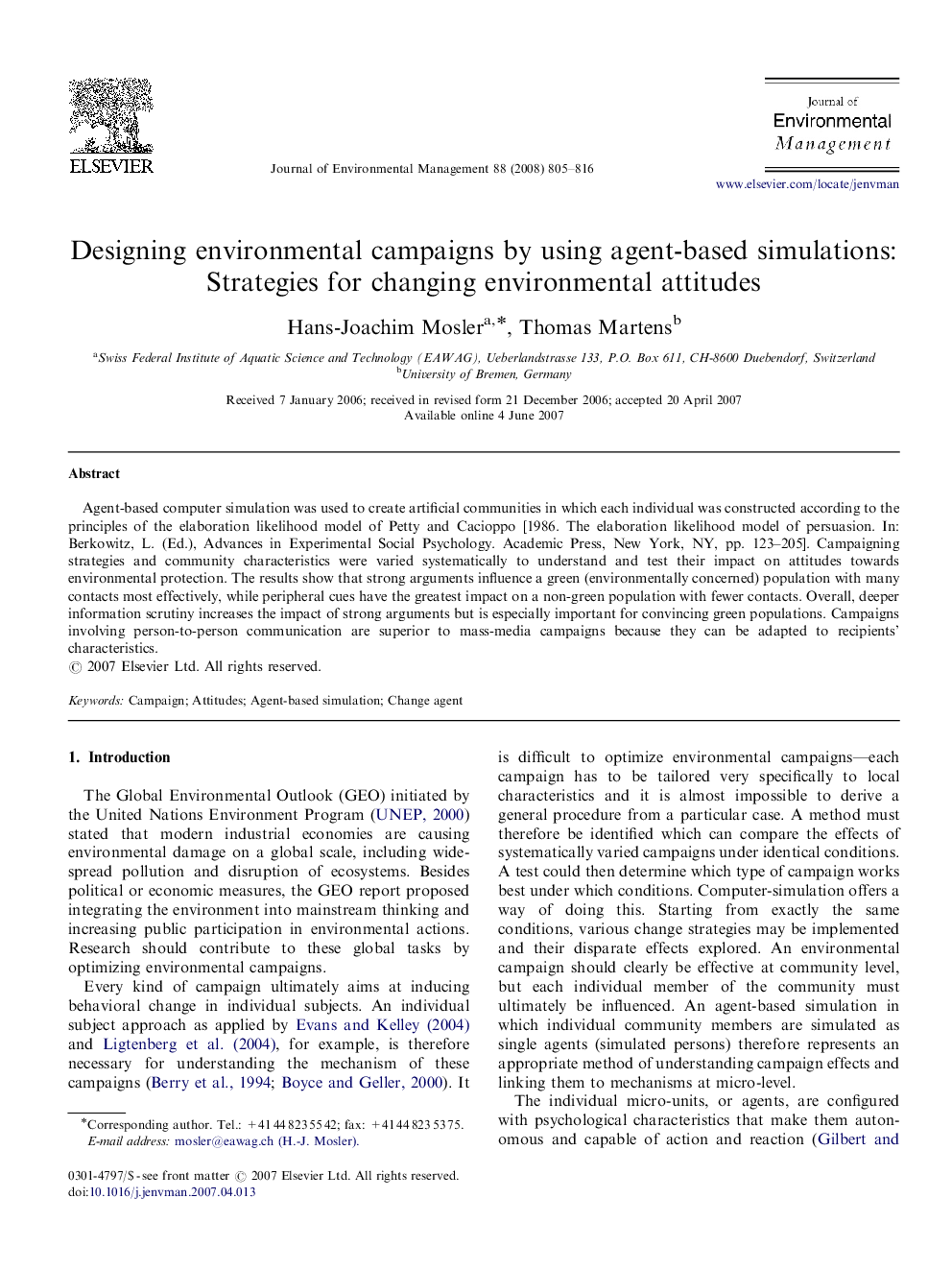| Article ID | Journal | Published Year | Pages | File Type |
|---|---|---|---|---|
| 1058277 | Journal of Environmental Management | 2008 | 12 Pages |
Agent-based computer simulation was used to create artificial communities in which each individual was constructed according to the principles of the elaboration likelihood model of Petty and Cacioppo [1986. The elaboration likelihood model of persuasion. In: Berkowitz, L. (Ed.), Advances in Experimental Social Psychology. Academic Press, New York, NY, pp. 123–205]. Campaigning strategies and community characteristics were varied systematically to understand and test their impact on attitudes towards environmental protection. The results show that strong arguments influence a green (environmentally concerned) population with many contacts most effectively, while peripheral cues have the greatest impact on a non-green population with fewer contacts. Overall, deeper information scrutiny increases the impact of strong arguments but is especially important for convincing green populations. Campaigns involving person-to-person communication are superior to mass-media campaigns because they can be adapted to recipients’ characteristics.
